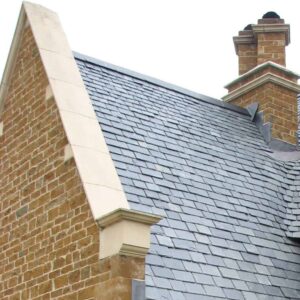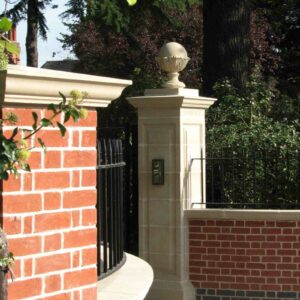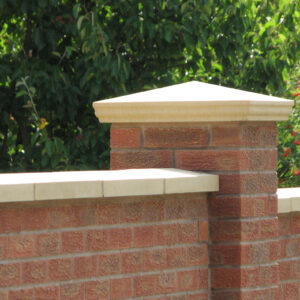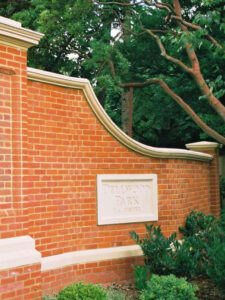 Add My Company
Add My Company
What are Coping Stones Used For?

Coping Stones play a role in protecting and enhancing the functionality of walls and structures. They serve multiple purposes ranging from playing a role in helping to prevent water damage to adding an aesthetic charm that elevates the overall design. Below are the four key reasons to use coping stones:
1.Waterproofing
One of the functions of coping stones revolves around helping with waterproofing. Assisting as a weatherproof barrier, helping to prevent water from infiltrating and compromising the underlying structure. By covering the top surface of walls, coping stones redirect rainfall away from the structure, ensuring it is less likely to permeate the building envelope.
It is important to note that coping stones alone are not sufficient for waterproofing a building. It will also depend on:
- The architectural design ensures that a building is designed properly and correctly to the current building regulations.
- The correct waterproofing works are carried out such as damp-proof coursing and cavity trays, designed by a qualified architect.
There is also the option to seal the coping stones along the length of the wall.

Coping stones can help protect buildings and structures against other water-related issues. They assist in the protection against potential water ingress from sources such as dripping gutters or overflowing roofs.
However, coping stones do not help with driving rain, as in rain that is hitting a wall directly. They help to protect and reduce water ingress, but only play a role. By effectively channelling water away from wall surfaces, coping stones can help to reduce the risk of water-related damage, contributing to the overall integrity and longevity of the structure.
By carefully selecting durable materials and employing expert installation techniques, coping stones certainly help with the effectiveness of waterproofing measures. Natural stone, cast stone, concrete, or metal coping stones are popular choices due to their inherent strength and resilience, ensuring long-lasting performance even in the face of harsh environmental conditions. Nevertheless, it is crucial for builders to exercise utmost caution during the installation process as coping stones inherently possess a joint that can potentially become a weak point.
To help with the waterproofing, coping stones need to overhang by at least 30mm to 50mm on each side, increasing depending on the specific project. The reason this overhang is recommended is so that water can drip off without touching the wall. Coping stones should have a drip groove which needs to overhang garden walls for example by the minimum of 30mm to work effectively and reduce the effects of weathering on the wall itself.
As you can see in the graphic below the drip groove is clearly shown:

2. Aesthetics

Coping stones not only serve functional purposes but also provide an opportunity to enhance the overall appearance and aesthetic appeal of buildings and structures. With their versatile designs, shapes, and materials, coping stones can transform plain walls or parapets into visually stunning elements that enhance the architectural beauty of the entire structure.
There are design options for coping stones, allowing architects, builders, and homeowners to customise the look and feel of their buildings. Whether the architectural style calls for a traditional, rustic, modern, or contemporary design, coping stones can be tailored to complement and harmonise with the overall architectural vision.
In addition to design, coping stones are available in three different shapes, allowing for further customisation. Some commonly used shapes include flat-top coping stones, which offer a clean and streamlined look, and sloping-top coping stones, which add dimension and visual interest. The choice of shape depends on the desired outcome and architectural vision, with each shape offering a unique design element to the overall structure.
Additionally, coping stones have versatile applications beyond just walls and parapets. They can be utilised in other areas such as swimming pools and raised flower beds, giving a high-end feel to the entire project. By incorporating coping stones in these spaces, architects and homeowners can create cohesive and visually appealing designs that elevate the overall aesthetic appeal.
3. Durability

As previously mentioned, coping stones are crafted from robust and durable materials, such as cast stone, natural stone, concrete, or metal, which are chosen for their strength and ability to withstand various weather conditions. Therefore, they require minimal maintenance. These materials are carefully selected to provide coping stones with exceptional durability and resilience, helping them to effectively protect the underlying structure from potential damage.
The primary purpose of coping stones is to help to withstand the rigors of the environment and act as a resilient barrier against the elements. They are designed to resist deterioration and aim to maintain their structural integrity over time, even in the face of heavy rain, snow, intense sunlight, or high winds. Through their sturdy construction, coping stones strive to endure the test of time, offering protection against moisture infiltration, UV degradation, and other potential sources of damage to the underlying structure.
4. Maintenance
Coping stones, such as cast stone coping, contribute to the protective function that helps enhance the durability of the overall structure. They play a role in preventing harmful elements from directly impacting the underlying materials. This quality becomes particularly valuable in areas that experience challenging climates or severe weather conditions.
Cast stone coping exhibit some resistance to weathering, moisture, and other forms of deterioration. This characteristic ensures that it remains robust over time, thereby offering a long-lasting and relatively low-maintenance solution for architectural detailing. The enduring nature of cast stone coping allows it to withstand the test of time, ensuring that the building or structure remains in optimal condition for an extended period. However, it is worth noting that the textured nature of cast stone copings can attract moss and lichen which is why we provide our Cast Stone Cleaning Guide.
The investment in cast stone coping pays off by providing lasting protection and aesthetic appeal without the need for frequent repairs or replacements. This durability factor makes cast stone coping a cost-effective choice for those seeking an architectural solution that requires minimal upkeep.
For more information regarding the cleaning and maintenance of cast stone, please check out our article Cleaning Cast Stone – A Complete Guide.
Conclusion
In conclusion, coping stones help to serve multiple functions in construction and architecture. They assist as a waterproofing barrier, redirecting water away from structures to help prevent damage and increase longevity. However, it is important to note that coping stones alone are not the ultimate solution when it comes to waterproofing.
Furthermore, coping stones provide customisable design options, enhancing the aesthetic appeal of buildings and contributing to a cohesive architectural vision.

Moreover, coping stones are crafted from durable materials, offering resilience against various weather conditions. The use of cast stone copings guarantees long-lasting protection and visual allure without compromising durability or necessitating extensive upkeep.
There are various applications and benefits of coping stones. To delve deeper into the topic, read our previous blog – Ultimate Guide to Cast Stone Copings.
For more information on What are Coping Stones Used For? talk to Acanthus Cast Stone Ltd

